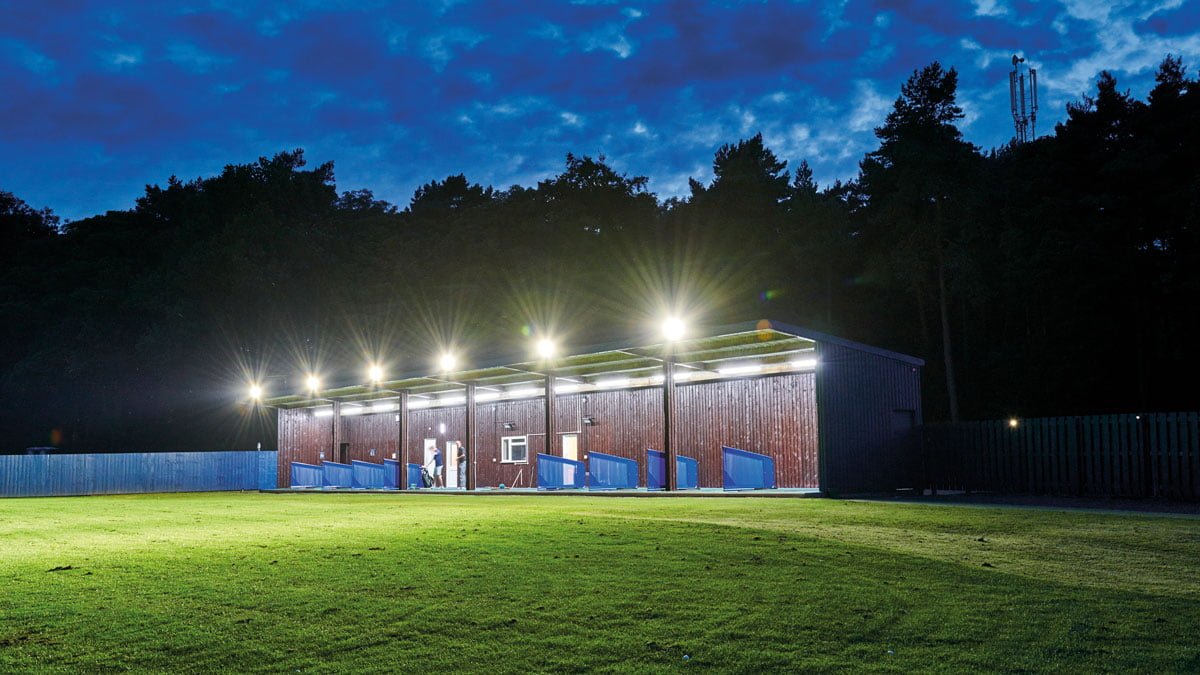
Dean Bailey returns to Matfen Hall in the heart of Northumberland, and tackles one of the county’s finest modern courses
Since it opened for play in 1995, the golf course at Matfen Hall has undergone great transformation – not least in recent years following the resort being purchased by the Walwick Estate Group in 2020.
A programme of investment across the business has followed – including a multi-million-pound renovation of the hotel and increased funding on the golf course across its agronomy, machinery and staffing.
Having opened more than 25 years ago, today Matfen is home to three loops of nine – Douglas, Standing Stone and Dewlaw. On our visit we played the first two, though we highly recommend adding a further nine on the Dewlaw – which opened in 2007 – as its natural water hazards, woodland setting, modern design aesthetic and two brilliant par threes add a great deal to Matfen’s offering.
The opening par five on the Douglas loop is as welcoming as they come. At 463 yards from the white tees, its wide fairway invites players to hit driver. From here, be wary of the ha-ha wall, which splits the fairway some 120 yards from the front of the green. Here you’ll find a single bunker on the right side, which must be avoided.
Another inviting tee shot awaits at the short par four second and you’ll want to leave as short a shot in as possible here as the bunkerless green sits beyond a steep drop and is one of the smallest at Matfen Hall.
A pair of demanding par fours follow. The third is 90 yards shorter, but you must play close to the trees on the right to leave an unobstructed view of the green – which is guarded by a huge tree on the front left corner and two bunkers on its right side. At the fourth, a trio of fairway bunkers on the left are well positioned to catch tee shots of around 250 yards. From here, a long approach must navigate between two bunkers, including an especially large one on the right side.
At just over 200 yards, the fifth plays even longer up the hill and while there is trouble short – a cross bunker and two more greenside traps – the putting surface is generous and the back slope tends to catch well-struck shots.
At 547 yards, the sixth is a true three-shotter. The fairway is wide and features no hazards. A welcoming approach should also be no trouble, just be sure to stay back of the bunkers some 60 yards short of the green, which is wrapped around a single bunker on it’s left side, with two more waiting on the right to catch out those who guard against a trip to the left one.
The Douglas loop reaches its crescendo with a trio of holes set around the lake.
At the 345-yard seventh, the drive over the lake is simple, though avoiding the trees on the left and trio of bunkers on the right is a far more difficult prospect. From here, a short approach must make the carry up to the green, which is ringed by bunkers – the one at the front edge is a particularly popular spot.
A tricky, 163-yard par three follows with the lake on the right side of the green this time. This one plays longer into the prevailing wind and there are two bunkers on the left side waiting to grab any balls which head too far away from the water.
The final hole of the Douglas nine, and the most difficult, the ninth can be stretched to more than 420 yards and your tee shot must navigate between a long ribbon of sand on the left side and the lake on the right. Those who play too far away from the lake can be blocked out by the trees on the left side for their second shot, which must make a long carry to a well-bunkered green.
In our experience, the Standing Stone loop is the most difficult of the three at Matfen Hall with the River Pont playing a big role throughout.
The shortest of the par threes, the opening hole of this nine is played to a huge green with two front bunkers, just be careful not to be caught out by the river on the left side.
At the slight right-to-left dogleg second, an accurate tee shot is required between the trees. A ha-ha wall guards the route to the putting surface, meaning players must carry the ball up to this wide green with a semi-circle of bunkers around its front edge.
The long par four third, which is more than 440 yards, can be a particularly tough driving hole with fairway bunkers on both sides of the dogleg. The space between the traps is more generous than it appears from the tee, as is the entrance to the green between two more bunkers.
A downhill par five which is under 500 yards, long drivers can make birdies at the fourth hole. The sloping fairway invites booming drives and from here, you may wish to take on the carry over another ha-ha wall – though leaving yourself an 80-yard pitch to a wide, shallow green with a trio of front bunkers often yields a better chance of a four at this one.
Having laid up at the last, you may be faced with another short pitch to the green at the 438-yard par four fifth hole. The toughest hole at Matfen in our experience, a long drive avoiding sand on the left is followed by an equally long approach over a stream to a vast green, some 35 yards from front to back. Play these two holes in nine and you’ve done well.
The Pont again crosses in front of the green at the sixth, though a shorter approach with a short or mid iron, is far more inviting. A back bunker is placed to catch those who take far too much club to clear the water.
A true three-shotter, the 494-yard seventh hole is a spectacular sight. Having played right of the trees and short of the bunker on the far side of the dogleg, you get a great view up to the green, which sits atop a hill strewn with bunkers, It’s a shallow landing place and a well-controlled wedge up the hill is required to leave a makeable putt.
The signature hole – a demanding par three over water – follows.
The eighth hole on the Standing Stone loop is a demanding 191-yard par three. The green is set at a 45-degree angle to the tee, with back flags some 30 yards further away than front ones. The fast-flowing River Pont runs past the left side of the green, forcing players to make a demanding carry late in the round. For those who make it across the perilous waters, the putting surface slopes from left to right and can be tough to read correctly
The River Pont is once again in play on the final hole of our visit – this time to the left side of the ninth fairway. At 324 yards, be careful with the line of your tee shot – you want to ensure you find the fairway and don’t run out of room on the right, just don’t go too far left and risk a trip into the river. From here, a simple approach beyond a pair of front bunkers is all that remains between you and a closing birdie.
Caddy’s tip
Don’t mess with the river, lake, trees or walls – they’ve all been around a lot longer than you have
Our verdict
A mature English parkland course set in the Northumberland countryside with first-class facilities and a stunning hotel – what more could you ask for?








